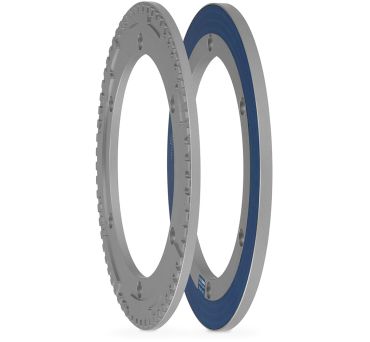Encoders for a Legged Robot
Learn how encoders enhance legged robots, key factors in encoder selection, and why inductive encoders are a highly effective option.
Legged robots are revolutionizing robotics with their agility and versatility, and one key technology enabling their advanced movement is high-performance encoder systems. This article explores the role of encoders in legged robots, defines a legged robot, discusses key considerations for selecting an encoder, and explains why inductive encoders are a highly effective option.
Understanding Encoders for a Legged Robot
Encoders are devices that convert mechanical motion into an electrical signal, allowing it to be read by a control system. In the context of legged robots, encoders ensure that every step, rotation, and adjustment is accurately tracked. This real-time data information provides accurate control over the robot’s movements, ensuring balance and dynamic interaction with its environment. With the rapid advancement of robotics, choosing the right encoder is essential to achieve optimal legged robot performance.
What Is a Legged Robot?
A legged robot is an autonomous mobile machine engineered with articulated legs to enable dynamic, agile movement. Legged robots are designed to mimic the natural movement of animals and are built to traverse uneven terrain, climb obstacles, and execute complex maneuvers. These examples of versatility and mobility make legged robots highly valuable where precision and adaptability are essential. Designed to operate in challenging environments, legged robots integrate advanced control systems and robust encoder technology to ensure smooth, coordinated movement.
Key Considerations for Choosing an Encoder for a Legged Robot
When selecting an encoder for a legged robot, there are several key performance considerations to help ensure reliable and precise operation in dynamic environments:
- Resolution and Accuracy: High precision is essential to track the subtle and rapid joint movements in legged robots. An encoder with high resolution ensures accurate position feedback, which is a crucial factor for balance and coordination.
- Robustness: Legged robots typically operate in unpredictable environments; therefore, a robust encoder must be able to tolerate vibrations, shocks, dust, and wide temperature variations without compromising performance.
- Mounting Tolerance and Working Range: Encoders with a large mounting tolerance and broad working range simplify integration and alignment.
- Size and Weight: Compact and lightweight encoder designs are important for maintaining the agility and efficiency of the legged robot, especially in mobile applications.
Understanding and applying these considerations can help designers and engineers select the right encoder to meet the technical demands of a legged robot and enhance its overall performance.
Selecting the Best Encoder for a Legged Robot
A legged robot requires precise, real-time feedback to maintain balance and adapt to dynamic environments. FLUX inductive encoders are engineered to meet these demands with exceptional accuracy, robustness, and ease of integration.
FLUX inductive rotary encoders are compact and ultra-lightweight, making them ideal for space-constrained legged robot joints. They deliver high-resolution absolute position data, ensuring reliable motion tracking for smooth, coordinated movement. Their frameless design allows for flexible installation with wide mounting tolerance, while immunity to magnetic and electromagnetic interference ensures stable performance.
For more extreme conditions, FLUX IND-MAX inductive angle encoders offer high-precision measurement and superior durability, pushing the boundaries of what’s possible for a legged robot in harsh operating scenarios.
With their advanced design and robust performance, FLUX inductive encoders are a top choice for engineers developing the next generation of legged robots.

Conclusion
Selecting the right encoder is essential for both the performance and precision of legged robots, as it can ensure smooth and coordinated movement. The high-precision performance, robustness, and wide mounting tolerance of FLUX inductive encoders highlight them as a highly effective option. These benefits make FLUX encoders ideal for demanding environments that require high accuracy and reliability, such as legged robot applications. FLUX inductive encoders can enable designers and engineers to ensure that their legged robots meet the challenges of real-world operation while pushing the boundaries of innovation.
